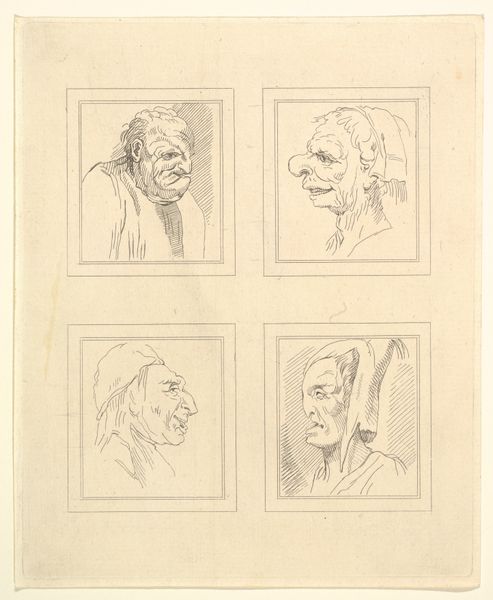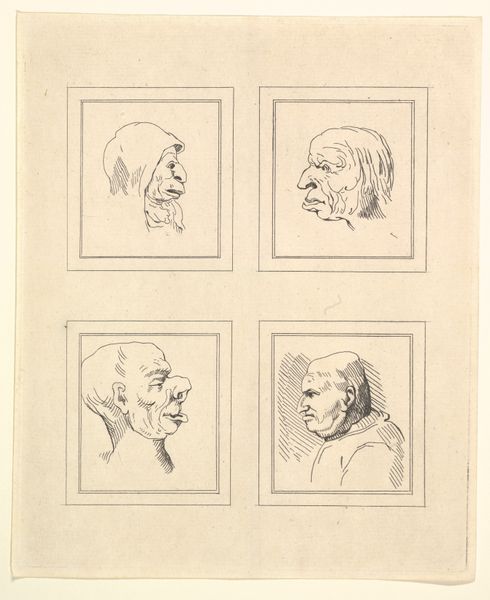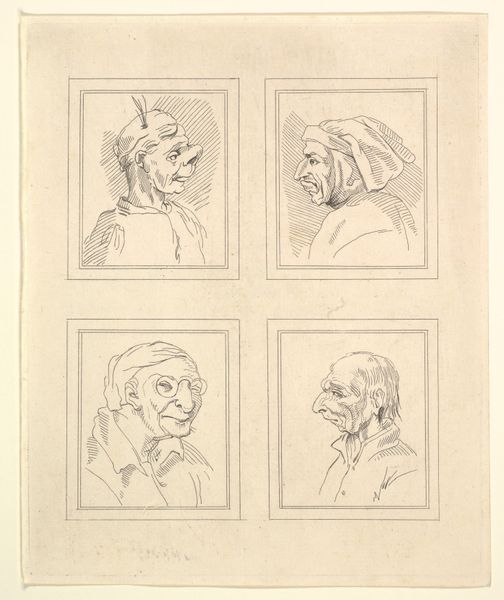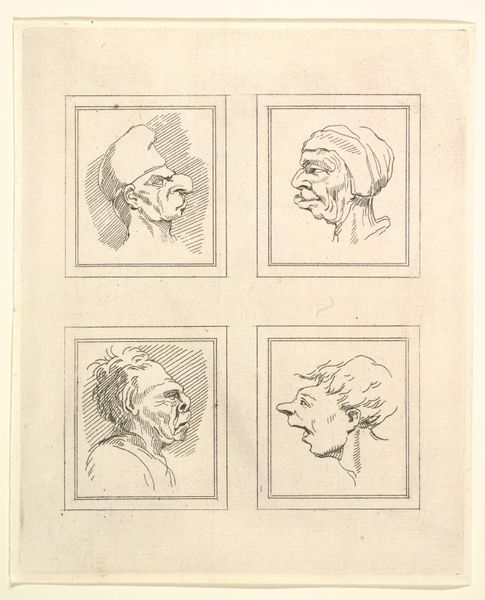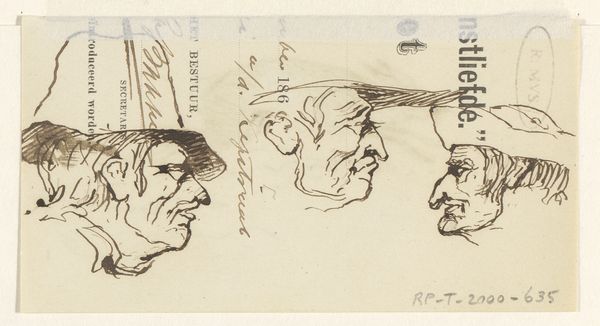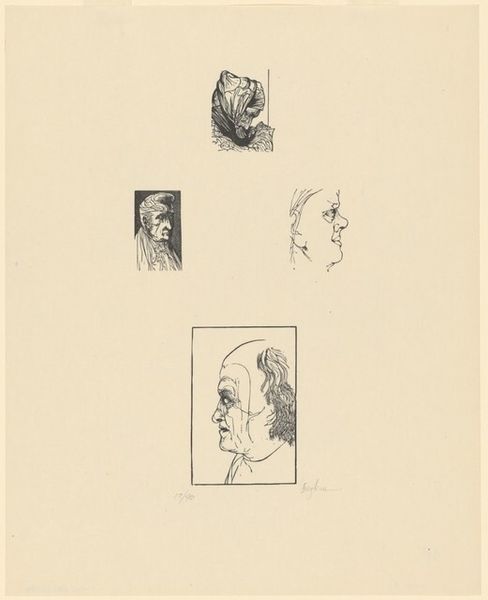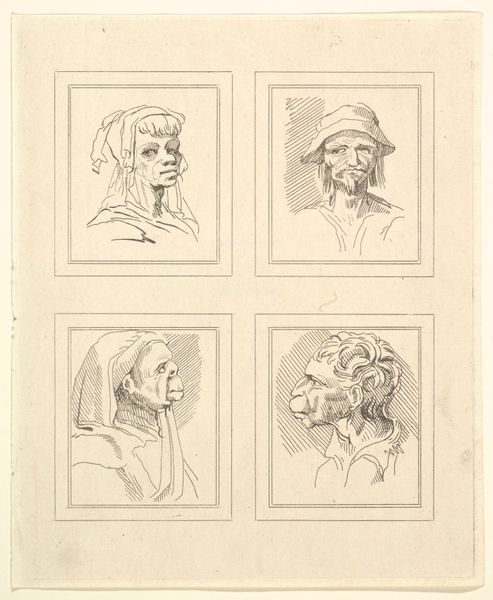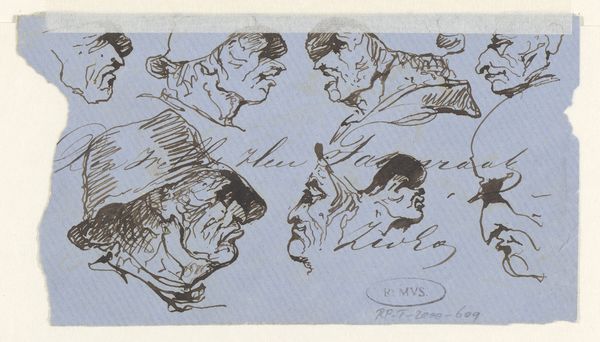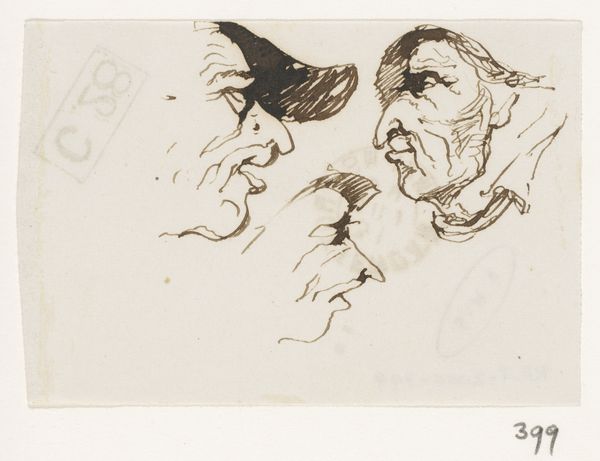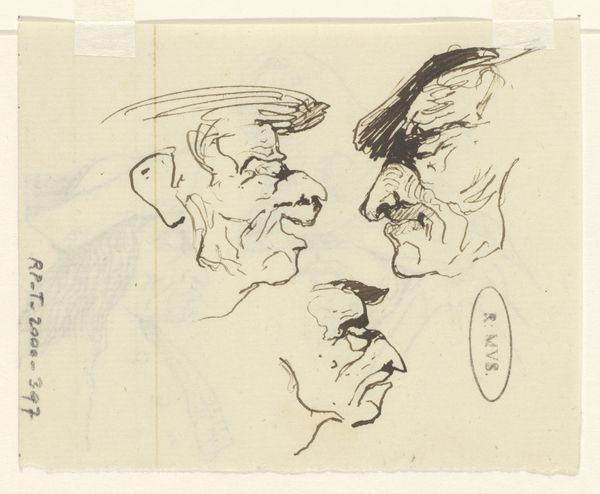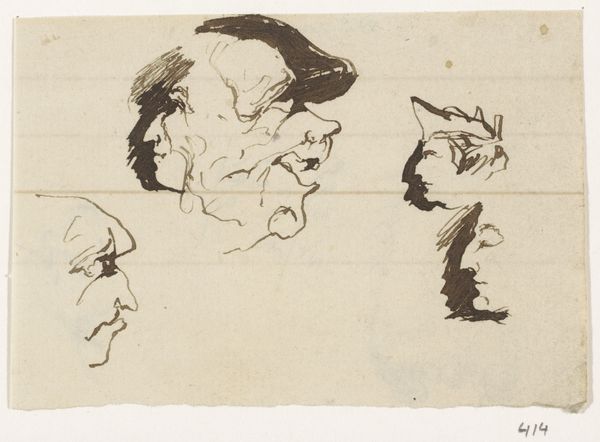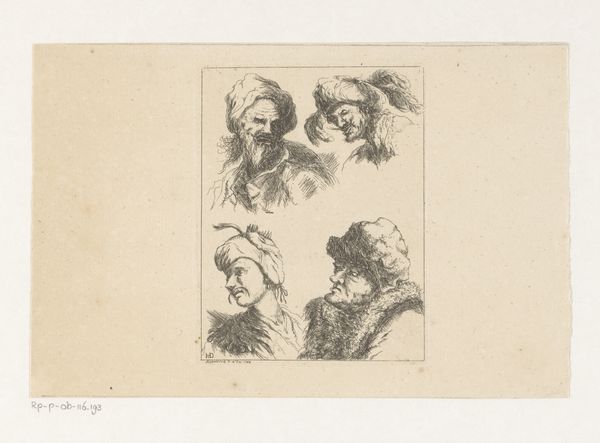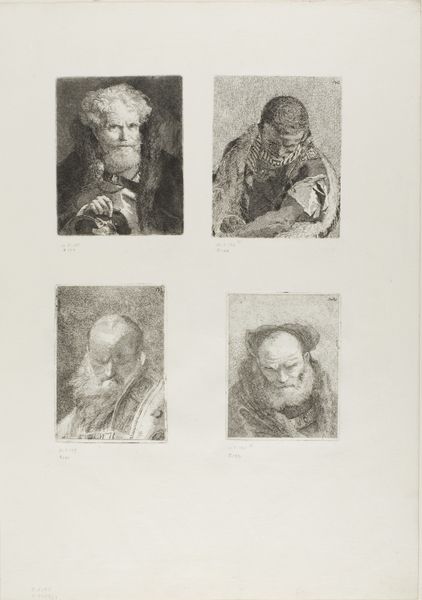
Four Heads (from Characaturas by Leonardo da Vinci, from Drawings by Wincelslaus Hollar, out of the Portland Museum) 1786
0:00
0:00
Dimensions: Plate: 7 13/16 x 6 3/8 in. (19.8 x 16.2 cm) Sheet: 7 15/16 x 6 9/16 in. (20.2 x 16.7 cm)
Copyright: Public Domain
Editor: Here we have Wenceslaus Hollar's "Four Heads," made in 1786, an etching or print showcased at The Met. The artist portrays quite striking caricatures. What can you tell us about the artist's decisions in this artwork? Curator: Indeed, it’s intriguing to consider Hollar’s structural choices. The division into four distinct frames presents a study in contrasts. Consider the line work. It's incredibly precise, particularly around the facial features. Note the varying densities of cross-hatching. What do you make of the angles of the hatching and the negative space? Editor: I see, the hatching varies and is dense around the eyes, which makes those regions look recessed. Are you suggesting the different ways of marking each head could suggest different values or social classes? Curator: It is interesting that you say that. Formalistically, notice the strategic distortion. Exaggerated noses and pronounced brows characterize each subject. Also note that the orientation shifts between frontal and profile views, a sophisticated approach to spatial representation within a flattened plane. How do these visual strategies serve the artist's objective? Editor: Well, with that in mind, the varying orientations and striking differences must emphasize their strangeness! And it makes the collection even more of an observation of diverse characters. Curator: Precisely. Through line, composition, and distortion, Hollar creates a powerful visual language that transcends mere representation, doesn't it? Editor: Absolutely, and the focused lens gives you so much insight into its construction. Curator: Indeed, looking beyond simple representation invites greater appreciation of its sophisticated formal mechanics.
Comments
No comments
Be the first to comment and join the conversation on the ultimate creative platform.
